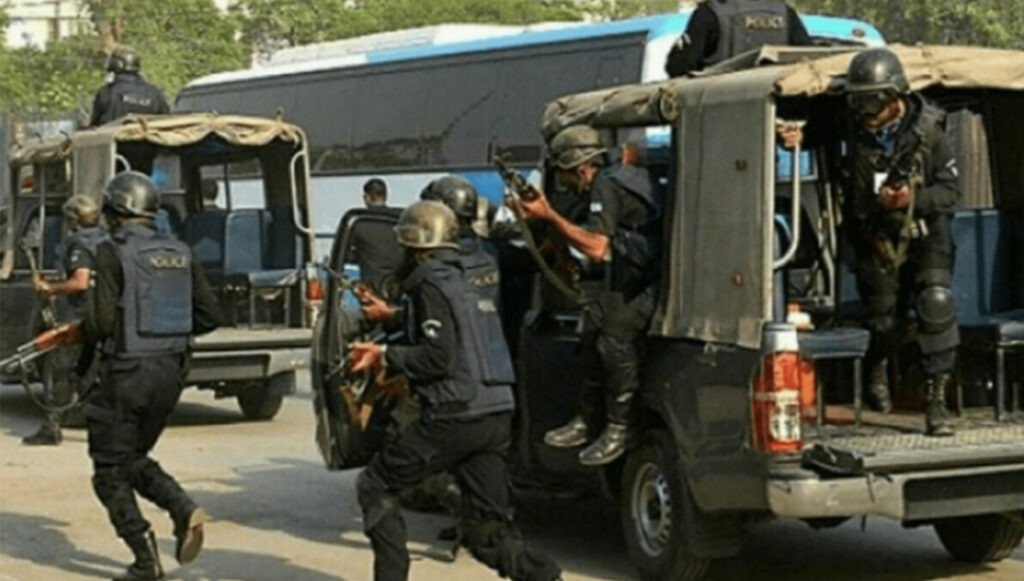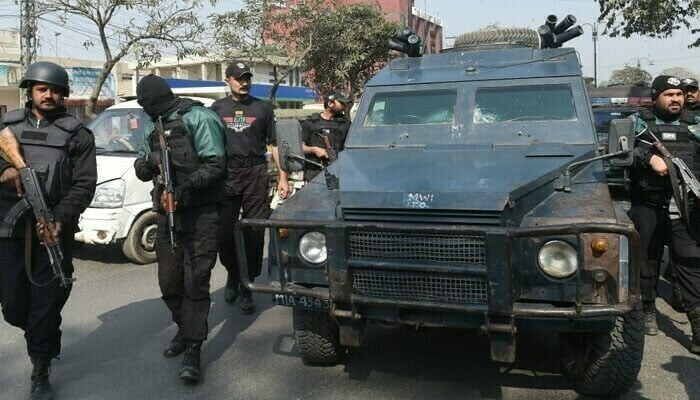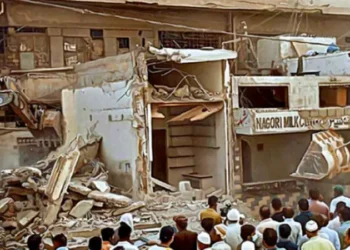ISLAMABAD (Web-Desk); Three militants were killed in a late-night operation carried out by the Counter Terrorism Department (CTD) of Khyber Pakhtunkhwa Police in Bannu, officials confirmed on Thursday. According to a spokesperson for the provincial CTD, the deceased were affiliated with the outlawed militant factions Gul Bahadur and Zarar groups.
The suspects, identified as Mudassir, Turab, and Mohammad Hussain—all natives of Bannu—had been on the police’s wanted list for their involvement in terrorism-related activities.
The CTD spokesperson said the operation was based on intelligence reports, and during the raid, officers recovered a cache of arms and explosives, including a Kalashnikov rifle, a pistol, and a motorcycle allegedly used by the suspects in their attacks.
This operation comes just over a week after a similar CTD-led raid in Lakki Marwat, where three militants associated with the banned Tehreek-e-Taliban Pakistan (TTP) were also eliminated in the Sarai Naurang area near Bhutani Canal.
In that operation, authorities seized multiple Kalashnikovs, four hand grenades, dozens of rounds of ammunition, and two mobile phones. Those militants, too, were reportedly involved in multiple assaults targeting police and law enforcement personnel.
The two high-profile operations reflect the ongoing efforts of Pakistan’s security forces to dismantle militant networks across Khyber Pakhtunkhwa and the tribal belt, amid growing concerns over the resurgence of militant activities in various parts of the country.
Recent data from the Pakistan Institute for Conflict and Security Studies (PICSS), an Islamabad-based think tank, shows that militant violence in Pakistan witnessed a modest rise in May 2025. The PICSS monthly security assessment reported 85 militant attacks during the month—an increase of nearly 5% compared to the 81 incidents recorded in April.

These attacks resulted in 113 fatalities, including 52 members of the security forces, 46 civilians, 11 militants, and four members of local peace committees. Additionally, 182 people were injured, comprising 130 civilians, 47 security personnel, four militants, and one peace committee member.
While the overall rise in attacks was relatively limited, a closer analysis of the figures reveals more troubling trends. Deaths among security forces saw a sharp spike of 73%, underlining the persistent danger faced by Pakistan’s law enforcement and military personnel. Civilian injuries also surged dramatically—by 145%—from 53 in April to 130 in May, pointing to an increasing toll on non-combatants.
In contrast, injuries sustained by security personnel saw a 20% decline, dropping from 59 in April to 47 in May. This indicates that while attacks have become more lethal for civilians, security forces may be experiencing improved defensive capabilities during engagements.
Security forces remained active in launching pre-emptive and retaliatory operations, resulting in the deaths of at least 59 suspected militants in May alone. However, these actions also came at a cost, with five security personnel losing their lives in the line of duty.
The total casualty count for May, combining victims of militant attacks and security operations, stood at 172. This figure includes 65 militants, 57 security personnel, 46 civilians, and four members of peace committees.
Provincially, Balochistan and Khyber Pakhtunkhwa were the most heavily impacted, accounting for 82 of the 85 attacks across the country. Balochistan recorded the highest number of fatalities, with 35 attacks resulting in 51 deaths, including 30 civilians, 18 security personnel, and three militants. A total of 100 people were injured in the province—94 of them civilians.
These figures underscore the persistent threat posed by militancy in Pakistan, particularly in regions bordering Afghanistan. Despite intensified security efforts, the growing number of casualties and attacks reflects the challenges ahead in restoring stability and countering terrorism in the region.

























